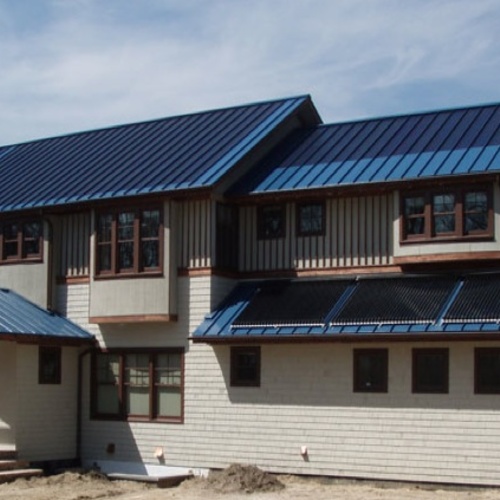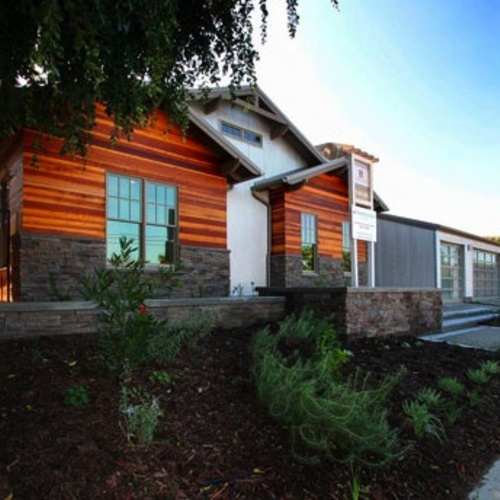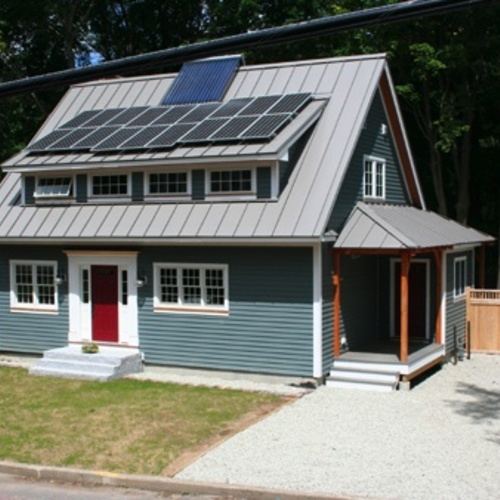
Image Credit: Image #1: KrazyTea / Wikimedia Commons
While I’ve designed a few single-family homes, I’m well aware that designing a high-rise office building is a whole ’nother kettle of fish. The challenge is far greater — at least an order-of-magnitude greater — requiring an experienced team that includes architects, structural engineers, mechanical engineers, and energy consultants.
I spent some time mulling the complexity of high-rise design during a recent tour of Manitoba Hydro Place, a 21-story office building in Winnipeg, Manitoba. I’m not in Winnipeg very often; I was in town because I’d been invited to give a presentation at a fenestration conference called FenCon 17. At the conference I met Harry Schroeder, a building systems engineer at Manitoba Hydro, and Schroeder offered to show me around his employer’s downtown headquarters.
A green showcase
What’s so interesting about this particular office building? Since it was completed in 2009 (and certified as LEED Platinum in 2012), Manitoba Hydro Place has received lots of international attention for its unusual green features and energy efficiency.
The high-rise office building is the headquarters of Manitoba Hydro, a utility that supplies the province with electricity and natural gas. The first floor of the building is mostly public space, including retail outlets. The lowest three floors, called the “podium,” have a bigger footprint than the tower above; the podium has a vegetated roof.
In hopes of encouraging employees to commute by bicycle and public transportation, the basement has only a limited number of parking spaces (see Image #2 at the bottom of the article). Some of the relevant specifications for the building are shown in the sidebar below.
Weekly Newsletter
Get building science and energy efficiency advice, plus special offers, in your inbox.

This article is only available to GBA Prime Members
Sign up for a free trial and get instant access to this article as well as GBA’s complete library of premium articles and construction details.
Start Free TrialAlready a member? Log in















11 Comments
Like fine wine...
I'm worried that Joe is getting softer and subtle as he ages... decanter anyone? Love it!
Highly glazed facades
Evaluating this building is tricky. While researching the article, I tried to contact John Straube, but he was busy and unreachable. Two days ago, I ran into John Straube at the NESEA conference in Boston, and as I guessed, he's very familiar with Manitoba Hydro Place.
I'm hoping he'll post a comment here. To summarize what he told me (and of course I don't want to put words in his mouth), Straube told me that the bulk of the energy savings that this building enjoys can be attributed to the massive ground-source heat pump system, and that these savings occur in spite of, not because of, the highly glazed envelope.
-- Martin Holladay
Aesthetics do matter too
Being less interested in large buildings, it took me a while before I bothered to read this article but found it very interesting.
Those of us who are engineers tend to design buildings that are conventional in appearance (at best) and sometimes just plain unattractive (to put it diplomatically). Architects can bring aesthetic sensibilities and beauty to buildings, as well as innovative design.
However I agree with Joe Lstiburek (and enjoy his jibes at this design). KISS, keep it simple, stupid! Maybe architects introduce some complexity and reduce some energy efficiency when making a building innovative and attractive. But at a cost. Maybe goes building goes too far, although I have to agree this is an interesting building from an energy management standpoint. I'd like to see an alternative building that is more energy efficient at half this cost, and see if an architect could make it at least as attractive as Manitoba Hydro Place.
Straube on Highly Glazed Enclosures
Martin--if Straube doesn't have time to comment, some of his key points can be found here:
BSD-006: Can Highly Glazed Building Façades Be Green?
https://buildingscience.com/documents/insights/bsi-006-can-fully-glazed-curtainwalls-be-green
Response to Kohta Ueno
Kohta,
Thanks for the link. My gut tells me that Straube and Lstiburek are correct: There is no advantage to designing a building with a façade that is 100% glazing.
-- Martin Holladay
100% Glazed Facades
Yes--definitely agree with this. I know folks use the logic: "If you're designing a 100% glazed building, a double facade is a great solution." (actually, I believe that's wrong--if you crunch through the numbers and include the loss of floor space, something like a high performance triple glazed curtain wall makes more sense.)
But I'd push back on the basic premise--I consider their statement analogous to: "If you're going to smoke crack and rob liquor stores, perhaps you might consider enjoying the crack after your robberies, to be more alert during the action." True that it is *better*, but....
Liquor story robbery advice
Love the analogy, Kohta.
-- Martin Holladay
One more point
There's an irony in the design of Manitoba Hydro Place: The designers sought simplicity and passivity, and ended up with complexity and the need for lots of active features.
After all, why build an extremely expensive multi-story concrete solar chimney? Obviously, because it's "passive," and it saves the cost of operating a fan. (The solar chimney probably cost millions of dollars, enough to run fans for 2,000 years, but we'll leave that issue aside.) The designers ended up with a building that is anything but passive, however -- it's as twitchy as a harpsichord that needs to be tuned twice a day.
-- Martin Holladay
"twitchy as a harpsichord"
I'm going to have to try to find a way to work "twitchy as a harpsichord" into conversation.
Response to Michael Maines
Michael,
My father was a piano tuner. For many years, he owned a harpsichord. No one should own a harpsichord unless they know how to tune it themselves.
-- Martin Holladay
Irony
The glass in the solar chimney may be iron free but the irony is not only the overall complexity, but also that in the winter, they in fact run fans to bring the buoyant hot air down from the highest level to the garage. Right when the solar chimney's stack effect is most strongly driving the air upward, there is fan power being used to bring that same air downward.
Log in or become a member to post a comment.
Sign up Log in